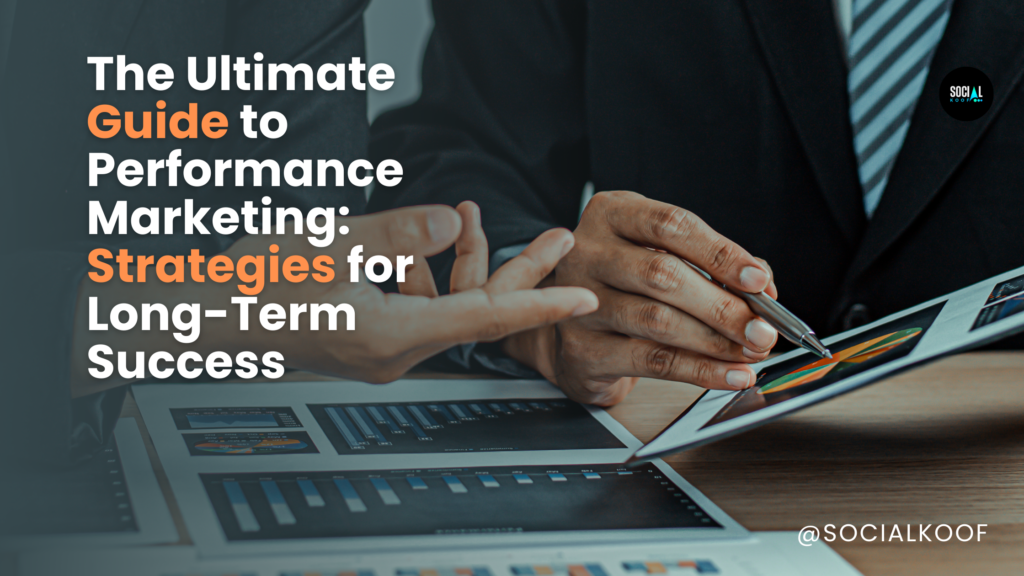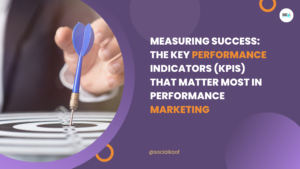
Performance marketing is a dynamic approach where advertisers pay based on specific actions, such as clicks, conversions, or sales. Unlike traditional marketing, which often measures success through impressions and reach, performance marketing focuses on tangible results. This guide will walk you through essential strategies for achieving long-term success in performance marketing, supported by data and growth trends.
Table of Contents
- Introduction to Performance Marketing
- Understanding Key Metrics
- Building a Data-Driven Strategy
- Top Performance Marketing Channels
- Crafting High-Converting Campaigns
- Leveraging Technology and Tools
- Optimizing for Long-Term Success
- Case Studies and Data Insights
- Conclusion
1. Introduction to Performance Marketing
Performance marketing focuses on achieving measurable outcomes. Advertisers pay only when specific actions occur, such as clicks, leads, or sales. This model ensures that marketing budgets are spent efficiently, as you only pay for actual results.
Why Choose Performance Marketing?
- Cost Efficiency: Pay only for measurable outcomes, reducing wasted spend.
- Measurability: Track and analyze results for clear insights into ROI.
- Scalability: Easily scale campaigns based on successful performance.
2. Understanding Key Metrics
To succeed in performance marketing, you need to track and optimize key metrics. Here’s a breakdown of essential metrics:
Click-Through Rate (CTR)
- Definition: The percentage of users who click on an ad out of the total who see it.
- Current Data: The average CTR for Google Ads across all industries is about 3.17% (WordStream).
- Importance: A higher CTR indicates engaging ad content and effective targeting.
Conversion Rate (CVR)
- Definition: The percentage of users who complete a desired action after clicking an ad.
- Current Data: The average CVR for e-commerce sites is around 2.4% (Unbounce).
- Importance: A higher CVR signifies effective landing pages and ad relevance.
Cost Per Acquisition (CPA)
- Definition: The cost to acquire a customer through a campaign.
- Current Data: The average CPA for Google Ads across industries is about $49 (Google Ads Benchmarks).
- Importance: Lower CPA means more cost-effective customer acquisition.
Return on Ad Spend (ROAS)
- Definition: The revenue generated for every dollar spent on advertising.
- Current Data: Average ROAS for Facebook Ads is approximately 4.0, meaning $4 in revenue for every $1 spent (AdEspresso).
- Importance: Higher ROAS indicates a profitable advertising strategy.
3. Building a Data-Driven Strategy
A data-driven approach is crucial for optimizing performance marketing efforts. Here’s how to develop one:
Set Clear Objectives
- Define Goals: Set specific, measurable goals like increasing website traffic by 30% or boosting sales by 20%.
- Align with Business Objectives: Ensure your marketing goals align with broader business targets.
Collect and Analyze Data
- Use Analytics Tools: Leverage tools like Google Analytics and SEMrush to gather data on user behavior and campaign performance.
- Track Metrics: Regularly monitor CTR, CVR, CPA, and ROAS to evaluate and refine your campaigns.
Optimize Based on Insights
- A/B Testing: Test different ad variations, landing pages, and calls-to-action to see what performs best.
- Adjust Strategies: Modify targeting, bidding, and creative elements based on performance data to enhance results.
4. Top Performance Marketing Channels
Different channels can offer unique advantages. Here are some of the most effective ones:
Pay-Per-Click (PPC) Advertising
- Description: Advertisers pay each time a user clicks on their ad.
- Growth Insight: Global PPC ad spending is expected to reach $200 billion by 2024, up from $180 billion in 2023, showing a growth rate of approximately 11% annually (Statista).
Affiliate Marketing
- Description: Affiliates earn a commission for driving traffic or sales to a business’s site.
- Growth Insight: The affiliate marketing industry is projected to grow at 10% annually, reaching $12 billion in the US by 2024, up from $8 billion in 2021 (Business Insider).
Performance-Based Display Advertising
- Description: Advertisers pay based on user interactions with display ads.
- Growth Insight: Spending on performance-based display ads is expected to increase by 15% annually, with projected spending of $90 billion by 2025 (eMarketer).
5. Crafting High-Converting Campaigns
Creating effective campaigns involves strategy, creativity, and ongoing optimization. Here’s how to craft high-converting campaigns:
Targeting the Right Audience
- Audience Segmentation: Use data to segment your audience based on demographics, behavior, and interests. Tailor your ads to each segment.
- Lookalike Audiences: Create lookalike audiences from your best customers to find new prospects with similar characteristics.
Developing Compelling Creative
- Engaging Ad Copy: Write persuasive ad copy with a clear value proposition and strong calls-to-action (CTAs).
- Visual Appeal: Use high-quality images and videos that resonate with your target audience.
Optimizing Landing Pages
- Relevance: Ensure your landing pages match the ad’s promise and provide a seamless user experience.
- Conversion Elements: Include clear CTAs, easy-to-use forms, and trust signals like testimonials and secure payment options.
6. Leveraging Technology and Tools
Technology can greatly enhance your performance marketing efforts. Here are some key tools:
Marketing Automation
- Tools: Platforms like HubSpot and Marketo automate tasks like email marketing and lead nurturing.
- Benefit: Increases efficiency and ensures consistent communication with prospects.
Ad Management Platforms
- Tools: Use Google Ads, Facebook Ads Manager, and LinkedIn Ads Manager for comprehensive ad management and optimization.
- Benefit: Allows for precise targeting, tracking, and adjustments to improve campaign performance.
Analytics and Reporting Tools
- Tools: Google Analytics, Adobe Analytics, and Tableau offer advanced data analysis and visualization.
- Benefit: Provides deep insights into campaign performance and user behavior.
7. Optimizing for Long-Term Success
Achieving long-term success in performance marketing requires continuous optimization and adaptation. Here’s how to stay ahead:
Continuous Monitoring and Adjustments
- Regular Reviews: Frequently review and analyze campaign performance to identify areas for improvement.
- Adapt to Changes: Stay informed about industry trends and adapt your strategies accordingly.
Investing in Skill Development
- Training: Invest in training for your marketing team to keep up with the latest trends and technologies.
- Certifications: Obtain certifications in key platforms and tools to enhance expertise.
Building Strong Partnerships
- Collaborations: Partner with influencers, affiliates, and industry leaders to expand your reach and credibility.
- Networking: Attend industry events and webinars to stay connected and informed.
8. Case Studies and Data Insights
Here are a few case studies that highlight the effectiveness of performance marketing strategies:
Case Study 1: E-Commerce Brand Boosts Sales by 150%
- Scenario: An e-commerce brand used PPC and affiliate marketing to drive traffic and sales.
- Results: They achieved a 150% increase in sales and a 30% improvement in ROAS within six months.
Case Study 2: SaaS Company Reduces CPA by 40%
- Scenario: A SaaS company optimized their PPC campaigns with advanced targeting and A/B testing.
- Results: They reduced CPA by 40% and increased their conversion rate by 25%, leading to significant cost savings and revenue growth.
Case Study 3: Retailer Achieves 200% Growth in Website Traffic
- Scenario: A retailer focused on content marketing and performance-based display ads.
- Results: They saw a 200% increase in website traffic and a 50% increase in sales over one year.
9. Conclusion
Performance marketing provides a focused, results-driven approach to digital advertising. By understanding key metrics, building a data-driven strategy, and utilizing effective channels, you can achieve significant, measurable results.
Key Takeaways:
- Focus on Results: Pay only for measurable outcomes to maximize efficiency and ROI.
- Utilize Data: Make data-driven decisions to optimize and refine your marketing strategies.
- Embrace Technology: Leverage the latest tools and platforms to enhance performance and efficiency.
By implementing these strategies and staying informed about industry trends, you can drive long-term success in performance marketing and achieve your business goals.










